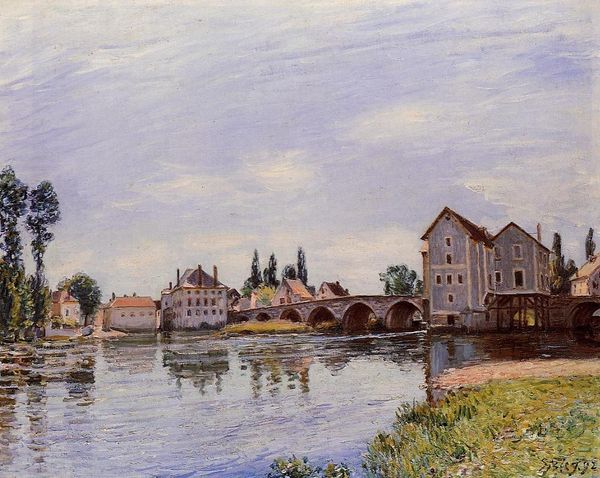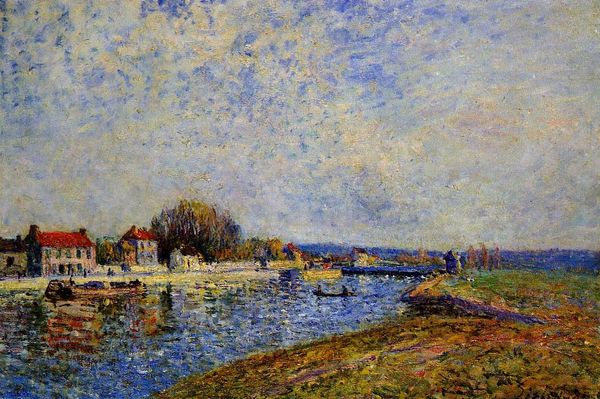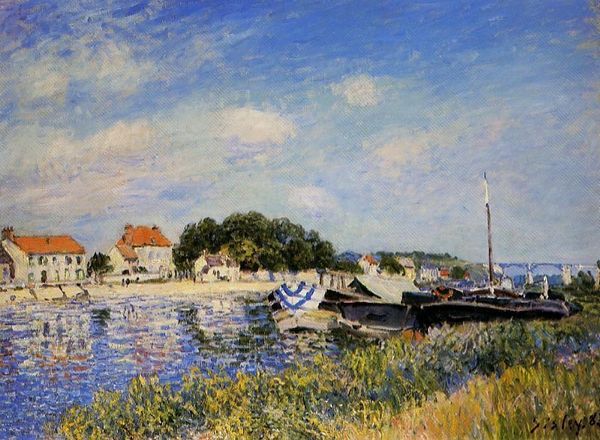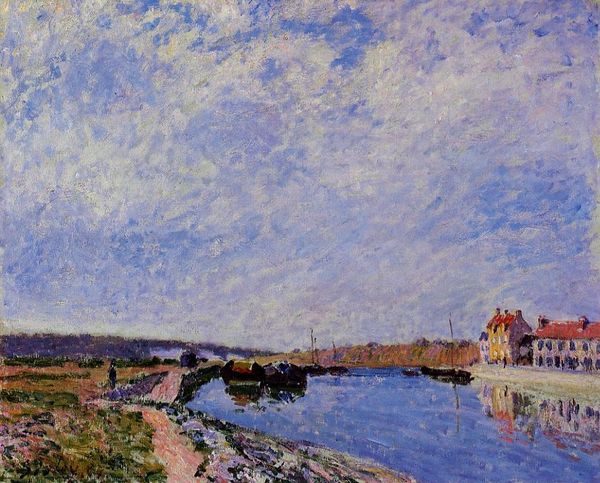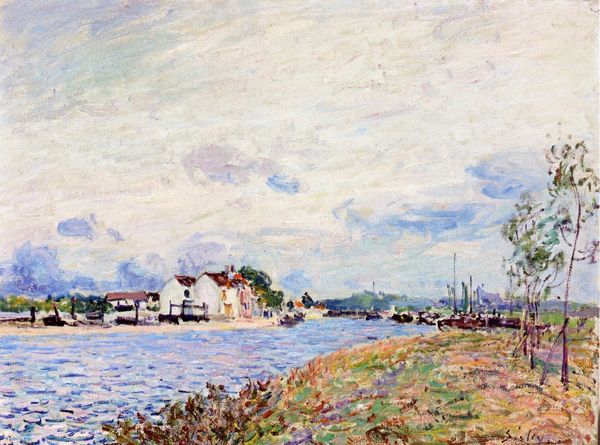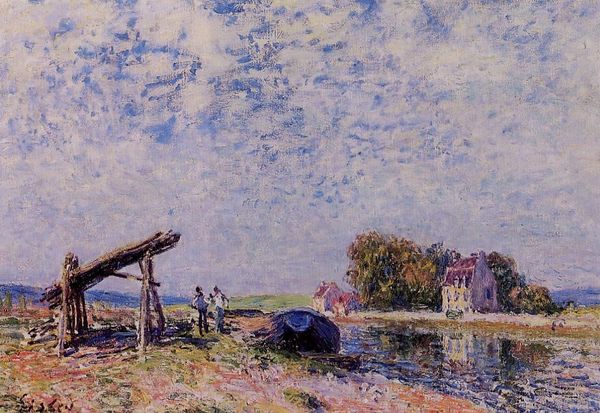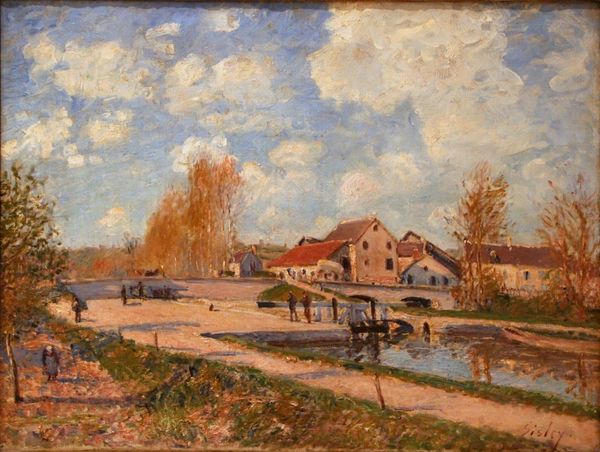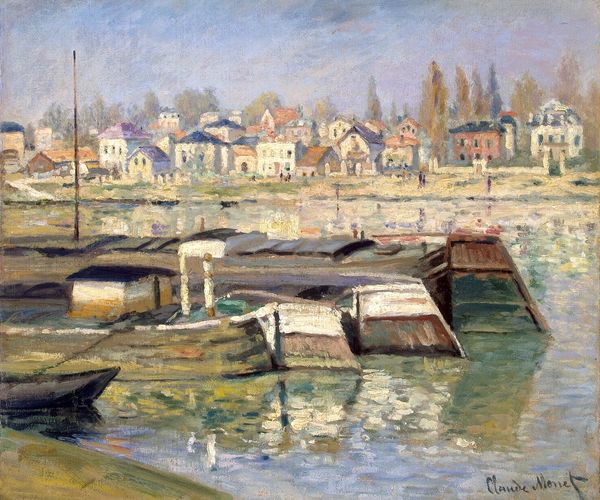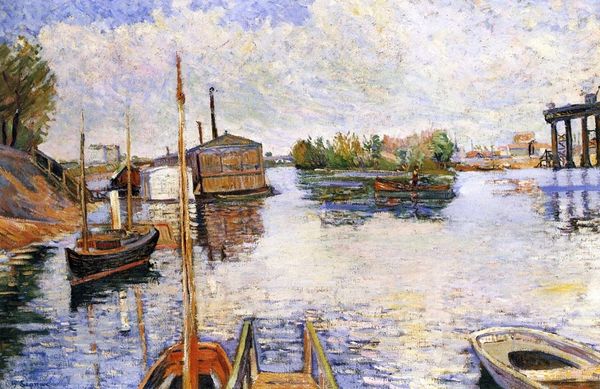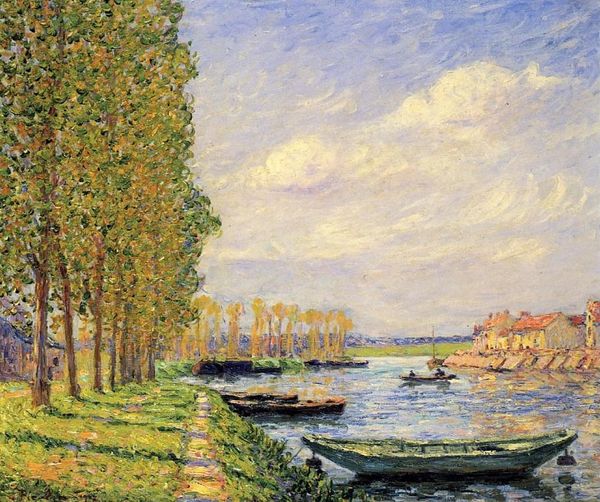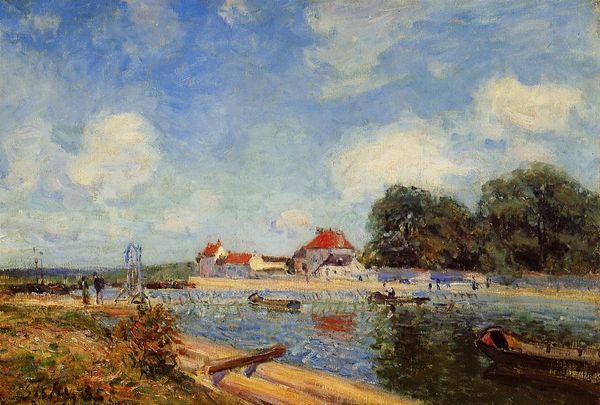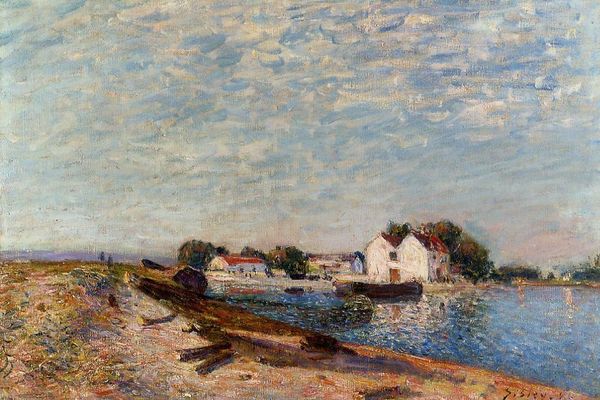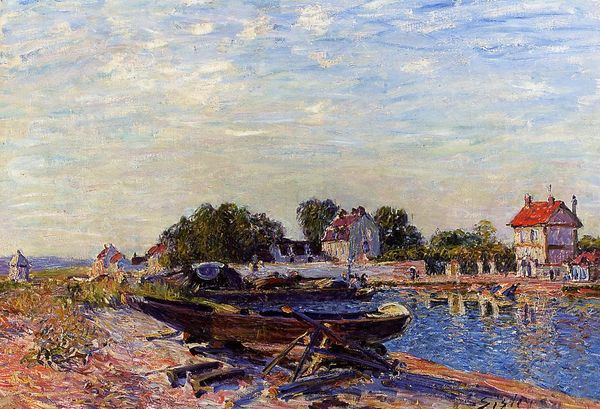
painting, plein-air, oil-paint
#
painting
#
impressionism
#
plein-air
#
oil-paint
#
vehicle
#
landscape
#
oil painting
#
seascape
#
water
#
cityscape
#
genre-painting
#
building
Dimensions: 46 x 65 cm
Copyright: Public domain
Editor: Immediately striking, isn’t it? A study in blues and creams. Peaceful, but with this subtle pulse of activity. Curator: Indeed. We are looking at Alfred Sisley’s "Sand on the Quayside, Port Marly," created in 1875. An oil on canvas that exemplifies plein-air Impressionism. The structure relies on a dynamic interplay between horizontal planes—water, land, sky—articulated by a vertical mast. Note the triangulation of the distant steeple, which introduces a crucial spatial recession. Editor: Right, the materiality here speaks to Sisley's interest in rendering labor visible, even within a scene largely devoted to leisure. Consider the titular sand; its sourcing and transport— likely arduous physical work that underpins the development of the very cityscape he captures. Curator: The light itself becomes a subject here. It's not merely illumination, but a modulating force, subtly altering the color and texture of every surface. Observe the impasto application; a strategic activation of the canvas's surface, each daub imbued with intentionality. Editor: Absolutely, and speaking of application, consider the choice to paint this particular quayside. Was it a conscious decision to depict a space shaped both by commerce and the natural ebb and flow? The workers exist alongside more leisurely figures; production coexisting with the pleasure derived from a modernized landscape. Curator: Sisley certainly demonstrates an exquisite awareness of formal relations. The rhythmic arrangement of buildings against the cloudscape, for instance, engenders a distinct pictorial harmony. Each element plays a deliberate role in constructing this unified visual experience. Editor: It encourages us to contemplate the human hand's pervasive presence. Whether we see a building's architecture or the churning of water by a passing boat, we're reminded of the human intervention shaping the experience and transformation of resources from that place. Curator: I appreciate how your insights highlight the intersections of industry and representation. Ultimately, for me, this piece reaffirms the canvas as a field for optical sensation—where color, light, and form converge to create a cohesive, aesthetically resolved whole. Editor: And for me, Sisley provides a small window into a world undergoing intense change. It prompts an interesting query about where exactly to draw the line dividing resource, process, consumption, and the romantic allure of the painted image.
Comments
No comments
Be the first to comment and join the conversation on the ultimate creative platform.
